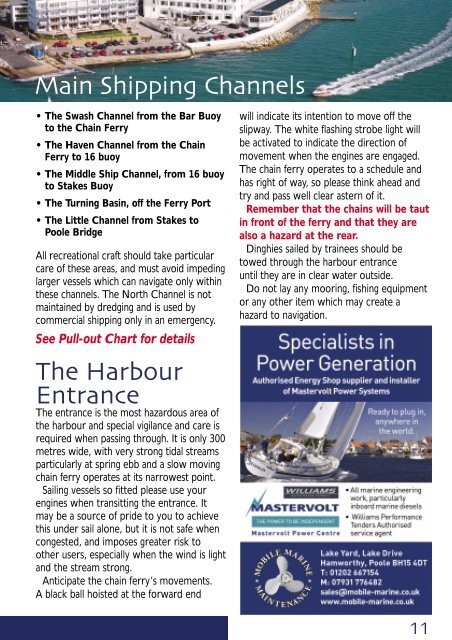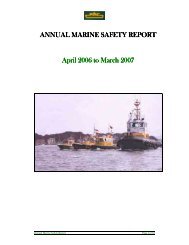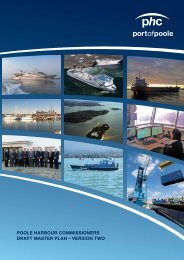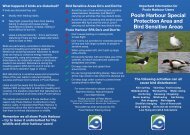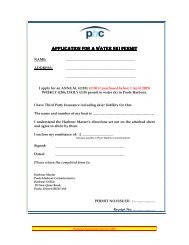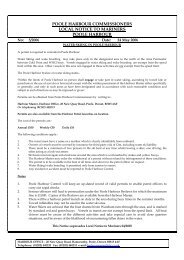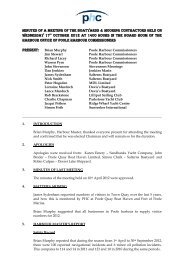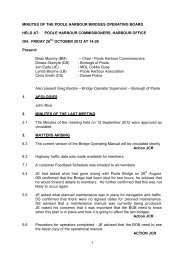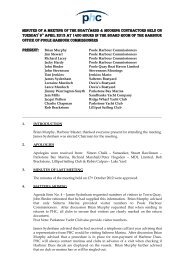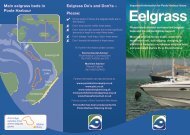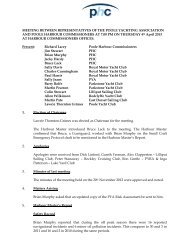Poole Harbour Guide 2011 - Poole Harbour Commissioners
Poole Harbour Guide 2011 - Poole Harbour Commissioners
Poole Harbour Guide 2011 - Poole Harbour Commissioners
Create successful ePaper yourself
Turn your PDF publications into a flip-book with our unique Google optimized e-Paper software.
Main Shipping Channels<br />
• The Swash Channel from the Bar Buoy<br />
to the Chain Ferry<br />
• The Haven Channel from the Chain<br />
Ferry to 16 buoy<br />
• The Middle Ship Channel, from 16 buoy<br />
to Stakes Buoy<br />
• The Turning Basin, off the Ferry Port<br />
• The Little Channel from Stakes to<br />
<strong>Poole</strong> Bridge<br />
All recreational craft should take particular<br />
care of these areas, and must avoid impeding<br />
larger vessels which can navigate only within<br />
these channels. The North Channel is not<br />
maintained by dredging and is used by<br />
commercial shipping only in an emergency.<br />
See Pull-out Chart for details<br />
The <strong>Harbour</strong><br />
Entrance<br />
The entrance is the most hazardous area of<br />
the harbour and special vigilance and care is<br />
required when passing through. It is only 300<br />
metres wide, with very strong tidal streams<br />
particularly at spring ebb and a slow moving<br />
chain ferry operates at its narrowest point.<br />
Sailing vessels so fitted please use your<br />
engines when transitting the entrance. It<br />
may be a source of pride to you to achieve<br />
this under sail alone, but it is not safe when<br />
congested, and imposes greater risk to<br />
other users, especially when the wind is light<br />
and the stream strong.<br />
Anticipate the chain ferry’s movements.<br />
A black ball hoisted at the forward end<br />
will indicate its intention to move off the<br />
slipway. The white flashing strobe light will<br />
be activated to indicate the direction of<br />
movement when the engines are engaged.<br />
The chain ferry operates to a schedule and<br />
has right of way, so please think ahead and<br />
try and pass well clear astern of it.<br />
Remember that the chains will be taut<br />
in front of the ferry and that they are<br />
also a hazard at the rear.<br />
Dinghies sailed by trainees should be<br />
towed through the harbour entrance<br />
until they are in clear water outside.<br />
Do not lay any mooring, fishing equipment<br />
or any other item which may create a<br />
hazard to navigation.<br />
11


